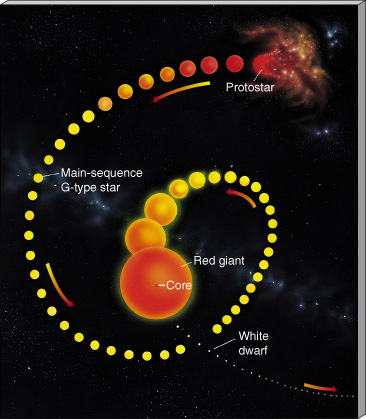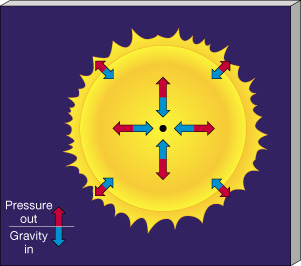Stellar Evolution Driven By Hydrostatic Equilibrium

BASIC IDEA
Stars spend their lifetimes trying to stay in
hydrostatic equilibrium and
thermal equilibrium.
When stars don't generate enough energy, they fall out of thermal
and hydrostatic equilibrium
and they evolve.
The story of
stellar evolution is simply the story of a star in its eternal
struggle with gravity.
Russell-Vogt Theorem:
If a star is in hydrostatic and thermal equilibrium, and
it derives all of its energy from nuclear reactions, then its structure is
completely and uniquely determined by its total mass and by the distribution
of the various chemical elements throughout its interior. In other words,
the mass and composition, the properties a star is born with are just the
properties which determine its structure. (Notice that no mention of
rotation or magnetic fields was made--these are implicitly assumed to be
of no importance.)
What do we know so far?

The Sun can maintain hydrostatic equilibrium for about 10 billion years
by fusing Hydrogen into Helium in its core at a rate that produces 1026
Watts.
After 10 billion years...


